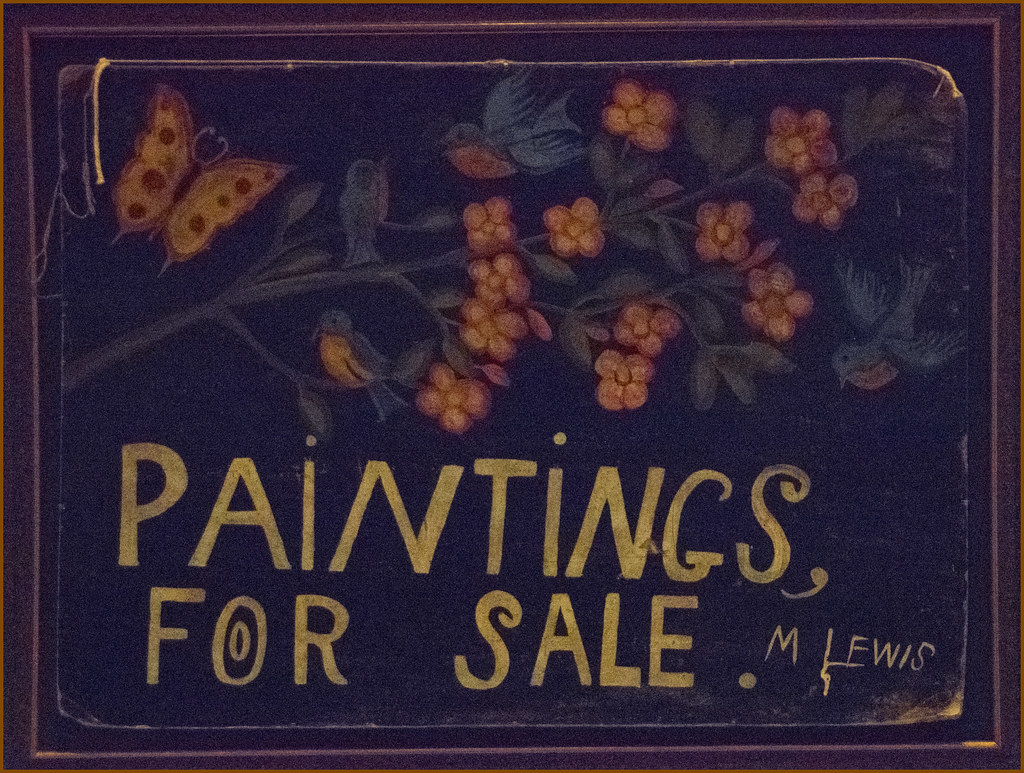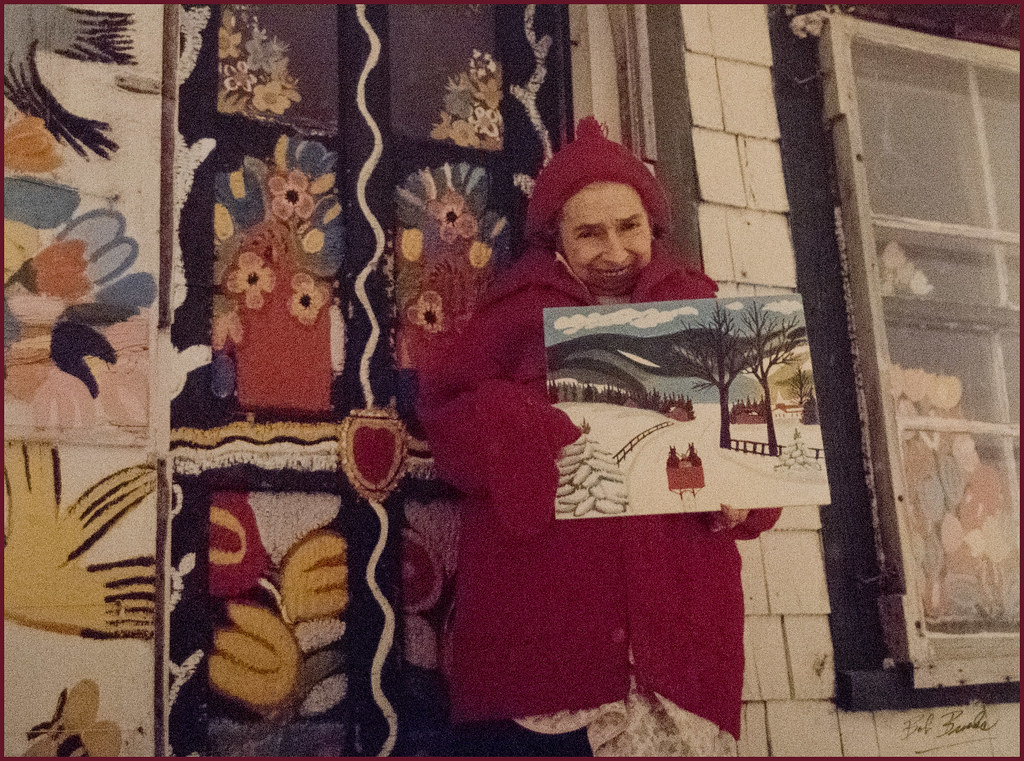BY: SADIE MACDONALD
For my last exhibition review for Musings, I decided to turn to an exhibition that's close to my heart: the Maud Lewis Gallery at the Art Gallery of Nova Scotia in Halifax.
Maud Lewis is Nova Scotia's most famous folk artist, and she is currently enjoying something of a moment after the release of the excellent film Maudie starring Sally Hawkins and Ethan Hawke in 2016. The 2017 discovery of a Lewis painting in a thrift store in New Hamburg, Ontario, also couldn't have hurt the increasing interest in her life and work.
Lewis's story is atypical for an artist. She never received formal art training and spent her entire life within the radius of Yarmouth and Digby County in Nova Scotia. After marrying Everett Lewis in 1938, the couple lived together in a small house without electricity or plumbing, which Maud lovingly covered with her own painted designs. To help bring some money, Lewis began selling paintings from her home, propping up a sign by the road that proclaimed "Paintings, for sale."
 |
| Maud Lewis's sign. Source. |
Lewis's bright paintings of animals and rural Nova Scotian scenes, as well as her cheerful demeanour, caught the eye of the Canadian public. In 1965, she was the subject of a CBC-produced documentary, a clip from which you can find below. Lewis died in 1970 after contracting pneumonia. While Lewis typically sold her paintings at about $2 apiece in her lifetime, her works now sell for up to $45,000, and firmly occupy a place in the Canadian pantheon of art.
Lewis's paintings are simple and happy, qualities which appear to form a contrast to her own life experiences. Lewis was born with physical disabilities and developed juvenile rheumatoid arthritis, which worsened with age. Mocked by other schoolchildren for her disabilities as a youth, Lewis left school early. As a young woman she became pregnant out of wedlock, with the baby being put up for adoption; despite her daughter's attempts to make contact, Lewis never had a relationship with her child. Lewis's relationship with her husband, which is the focus of the film Maudie, is said to have been volatile. This all stands in juxtaposition to her sweet, smiling disposition and cheerful, colourful art.
 |
| Maud Lewis holding one of her paintings in front of her house. Source. |
Lewis's art is simplistic in form, but it has understandably captured the affection of many. It makes you happy.
 |
| Maud Lewis. Three black cats, 1955. Oil on rpulpboard. Private Collection. Photo courtesy of the Art Gallery of Nova Scotia. |
Many of Lewis's paintings can be found at the Art Gallery of Nova Scotia in their permanent exhibit of her work. Lewis's most famous artwork, however, is not a painting, but rather her house. Like her other works, this house too can be found at the Art Gallery of Nova Scotia!
 |
| Maud Lewis House. Mixed Media, 4.1 x 3.8 m. Collection of the Art Gallery of Nova Scotia. Photo courtesy of Steve Farmer. |
Throughout her lifetime Lewis covered every surface of the house, inside and out, with paintings of birds and flowers. Sadly, the house lay abandoned after Lewis's husband Everett was killed in a struggle with an intruder in 1979. Years later a Digby group, the Maud Lewis Painted House Society, organized with the goal of saving the house. In 1984, the house was sold to the provincial government of Nova Scotia and placed in the care of the Art Gallery of Nova Scotia. Restorations began in 1996, and the house was eventually moved to the Gallery. It has remained there on permanent display since 1998.
Standing next to the tiny house, a visitor to the Gallery can peer into the window and door and see Lewis's paintings on the stairs, walls, and furniture. Made to look as it would have been when the Lewises lived in it, the house offers an intimate glimpse into their lives. One might wonder how Maud and Everett could have managed in this low, small space; I am barely over 5 feet tall, and I would have felt crammed living here. The house, however, has its own beauty. After looking at the house, I feel the urge to paint my everyday surroundings like Lewis did.
 |
| Maud Lewis House. Mixed Media, 4.1 x 3.8 m. Collection of the Art Gallery of Nova Scotia. Photo courtesy of Steve Farmer. |
The house itself exemplifies why Maud Lewis is so fondly regarded. She made the rural world around her artistic by capturing everyday scenes in her paintings and physically transforming her own domestic surroundings into art. Not all of us are so lucky to see things in this way.
Thus ends my run with Musings. While I will now vacate the position of Exhibition Reviews contributor, I'm sure there will be other writing adventures in the future!
 |
| Source. |


No comments:
Post a Comment
Note: only a member of this blog may post a comment.